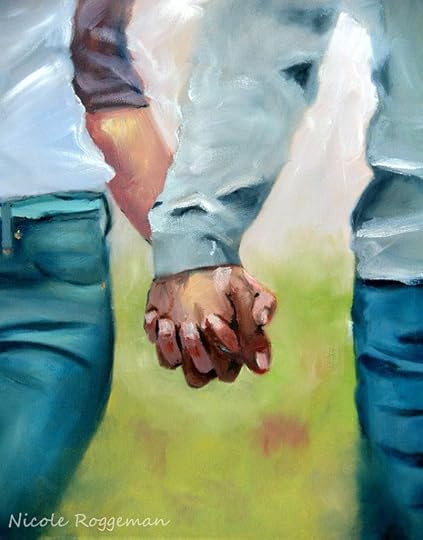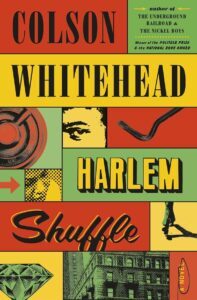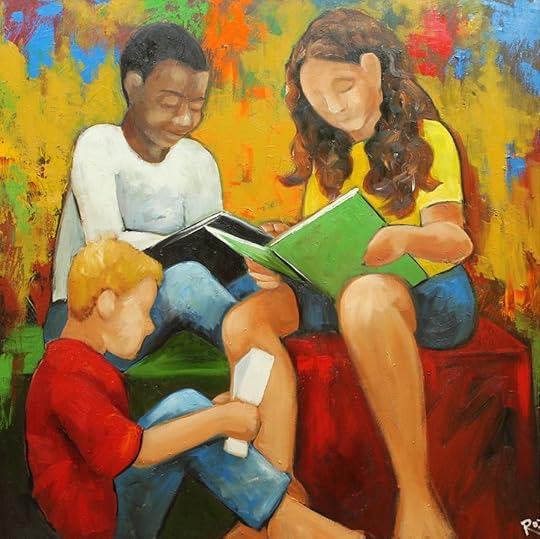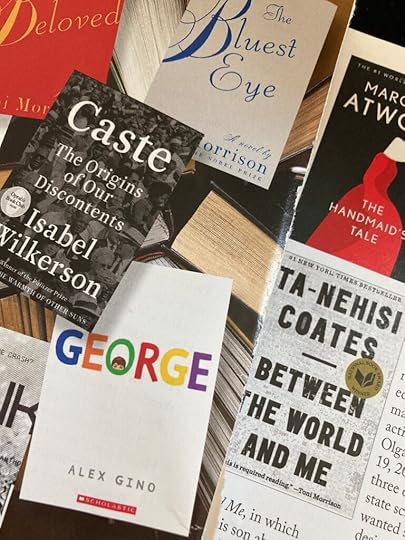Elizabeth A. Havey's Blog, page 4
May 22, 2022
Medscape Declaration of Sexual Rights
Medscape is an internet site dedicated to providing up-to-date information about healthcare and medicine. It is read by clinicians: doctors, nurses, aids etc. Medscape supplies readers with medical news, clinical references, and education. If you are interested in their statement (2005) concerning sexual rights, read below.
Sexuality is an integral part of the personality.
The right to sexual freedom. Sexual freedom encompasses the possibility for individuals to express their full potential. This excludes all forms of sexual coercion, exploitation and abuse.The right to sexual autonomy, sexual integrity and safety of the sexual body, including the ability to make autonomous decisions about one’s sexual life within a context of one’s own personal and social ethics.The right to sexual privacy as long as they do not intrude on the sexual rights of others.The right to sexual equity, which includes freedom from all forms of discrimination regardless of sex, gender, sexual orientation, age, race, social class, religion or physical and emotional disability.The right to sexual pleasure as a source of physical, psychological, intellectual and spiritual well being.The right to emotional sexual expression, which is more than erotic pleasure of sexual acts. Individuals have a right to express their sexuality through communication, touch, emotional expression and love.The right to sexually associate freely, which means the possibility to marry or not, to divorce and establish other types of responsible sexual associations.The right to make free and responsible reproductive choices, including whether to or not to have children, the number and spacing of children and full access to the means of fertility regulation.The right to sexual information based upon scientific inquiry, generated through unencumbered and yet scientifically ethical inquiry, disseminated appropriately at all societal levels.The right to comprehensive sexuality education–a lifelong process from birth throughout the life cycle, that should involve all social institutions.The right to sexual healthcare, available for prevention and treatment of all sexual concerns, problems and disorders.(adopted at the 14th World Congress of Sexology, 1999)
Comment: You might find reading this, that some statements are repetitive or possibly in some cases more than you have thought about, cared about or needed to know. Basically, the purport of the Declaration is to acknowledge that we are all sexual beings, and that as we grow and have relationships, we should never hesitate to set boundaries, speak out about our needs, or walk away from a relationship that does not support our rights and our comfort.
It is amazing to me while recently being exposed to statements made by politicians regarding pregnancy, miscarriages, labor, delivery, birth, even breastfeeding, the ignorance both willful and frightening some people in power display. And if it is deliberate, all the more reason for us to have a set of rights that we can turn to. Information is power. Thanks for reading, Beth
Artwork: Nicole Roggeman
Facebook Twitter LinkedInPinterestMay 15, 2022
Colson Whitehead’s Love Song to Harlem
A REVIEW OF “HARLEM SHUFFLE”
I know something of Colson Whitehouse’s prowess. I’ve read The Underground Railroad and The Nickel Boys. He won Pulitzers for both.
Now there is Harlem Shuffle, which the book’s flyleaf describes as …a family saga masquerading as a crime novel, a hilarious morality play, a social novel about race and power, and, ultimately, a love letter to Harlem.
It sure is a love letter and all the rest. But how does a white woman from the Midwest review this book…with eagerness. This is the Harlem of the sixties, of film and stage, of music that is tender and sorrowful. And I’ve been witness in the cities where I’ve lived to those in power turning away those who need what we all need, a home to raise our children. A place to thrive.
WHERE THE HERO LIVES
HARLEM. Say the word and the world has all sorts of images flooding their brains: music, laughter, hot summer nights. Dig deeper and creativity, tragedy and change leap out. Whitehead has created a character, Raymond Carney, who runs a furniture store in Harlem, is married to Elizabeth who doesn’t always know what her husband is up to, but they are in love, have two children, which makes them eager to move up—not to leave Harlem, but to find apartments in its better neighborhoods. But of course, you need money to do that.
So there is Carney’s cousin Freddie, who is constantly pulling Carney into not-so-healthy schemes, Carney then finding himself living on the edge, leaning toward bigger crimes with bigger benefits—but also the possible loss of everything he is building. Tension with humor pumped in. Whitehead’s writing a true gift.
“Says she wants herself a college man and I said, I went to college—”
“UCLA,” Carney helped out. “That’s right—University of the Corner of Lenox Avenue!”
WHAT THE HERO DESIRES
Harlem is full of characters, those created by Whitehead and those we’ve seen in films. How real are they? “…places he’d walked by ever since he was a kid, and exposed them as fronts. The doorways entrances into one vast, secret city. Ever close, adjacent to all you know, just underneath. If you know where to look.”
Then there are references to the Tombs, the Manhattan Detention Center. Even though this is fiction, I’m sure Whitehead did his homework, having Ray Carney’s cousin, Freddie, doing some time there..
…filled and overcrowded. Four cots for six men. Freddie curled on the cement floor, with its soaked-in piss. Forty-eight hours in jail nearly wrecked him. Nightmares seized him still, alive with grim, half-forgotten details: roaches scrabbling into his ear like it was some insect Cotton Club; a maggot swimming in foul, mess-hall oatmeal, twisting on his tongue.
But even though Freddie is messing up, Ray Carney is going to make it. He’s not leaving. He and Elizabeth keep moving up, getting a better apartment, improving their lives, though there is Freddie, his trajectory full of peril—and Carney will never abandon him.
You can live in Harlem and just survive. Or you can live in Harlem and yearn to move up. But this the 1960’s and the white man owns everything…“Should ask the Indians about looting. This whole country’s founded on taking other people’s shit.”
HOW THE HERO STRUGGLES AND DREAMS
Which makes people who struggle, wonder why they can’t take other people’s shit, when as Colson reveals throughout the novel, that “the shuffle” might be some tricks, lies and capers whose end result is MONEY, so when people of color have lived for years in a Harlem, they don’t take kindly to the white men in suits buying up land, building apartments and business complexes and basically “taking other people’s shit.” It makes folks angry. It can drag Freddie into more plots and schemes. Land is part of who a people are. They object to it being shuffled out from under them.
And then there’s the end of the novel, when Carney finds more change occurring. It’s a perfect comment that Colson drops on us: He’d seen protests on the local news. Irate citizens marching between the big bins of radio parts before courts ruled against them: NO EMINENT DOMAIN FOR PRIVATE GAIN. SAVE DOWNTOWN…Carney was too late…They’d already knocked it all down…The neighborhood was gone, razed. Everything four blocks south of the New York Telephone Building and four blocks east of the miserable West Side Highway had been demolished and erased for the WORLD TRADE CENTER site, down to the street signs and traffic lights. …even the indentations in the sidewalks where the struts of the elevated tracks had been riveted to the concrete—rubble.
And the kicker sentence: The buildings of the old city loomed over the broken spot, this wound in itself.
Brilliant. This is Colson Whitehead at his best, and ending with words that create Carney’s love song to HARLEM: There was an open house for a place on Strivers’ Row and he wanted to take a look…If you could swing it. It was such a pretty block and on certain nights when it was cool and quiet it was as if you didn’t live in the city at all.
Facebook Twitter LinkedInPinterest
May 8, 2022
A Perfect Day To Be Grateful
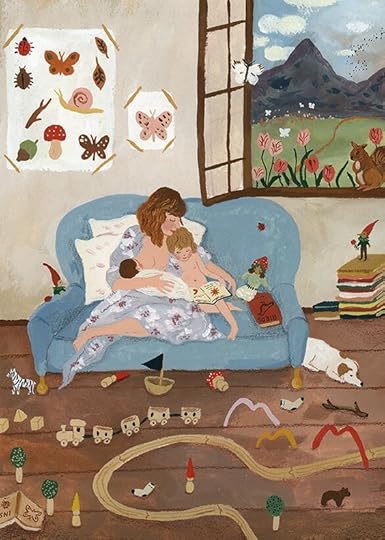 What can I, a mother and grandmother, do on Mother’s Day, that would be a gift to myself? Answer: take a nap. It’s an old family tradition, one my mother taught me. While raising we three children, she would sometimes walk into our living room and “collapse” on the sofa—her word. Once she lay down, she would instantly fall asleep. I began to understand in my kid-way, that she longed to have a reason to JUST RELAX, to LIE THERE AND DO NOTHING.TODAY, NO EXCUSE NECESSARYI often have to convince myself that it’s fine to take a nap, let other things go. And if I can’t doze off, the next best thing is reading. All mothers, grandmothers, aunts deserve time out, time set aside for their own thoughts and dreams.OTHER GIFTS…Of course, some of us would enjoy a massage or a manicure. Mother hands are constantly giving and caring. Our hands, even as they age, are beautiful symbols of all we do to raise, nurture, love our children. We soothe when our children are sick–no matter what their age. We clap at every piano recital, Scout event, baseball game and always encourage our children no matter what ages they are. We let our children know we are there for them.FROM MOTHER TO DAUGHTEROn this Mother’s Day, I am blessed, gifted with three perfect grandchildren, and of course my amazing adult children.Each one of them is wildly different, each one talented, loving. What more could a mother ask for. And when my husband and I need them, they are there for us. When we cry, they cry; when we laugh, they laugh. They can get wild and crazy, are always creative, curious and interesting–and all have found amazing life-partners. They love adventure and yet can sit with us on a cold winter night or a warm summer evening just talking–sharing ideas on music, books, film, politics. They all have their own opinions–it’s wonderful to take in their knowledge, their strengths and eagerness.And now that they are grown, the following scene, which is part of my short story FRAGILE, is only a memory, but a wonderful one.
What can I, a mother and grandmother, do on Mother’s Day, that would be a gift to myself? Answer: take a nap. It’s an old family tradition, one my mother taught me. While raising we three children, she would sometimes walk into our living room and “collapse” on the sofa—her word. Once she lay down, she would instantly fall asleep. I began to understand in my kid-way, that she longed to have a reason to JUST RELAX, to LIE THERE AND DO NOTHING.TODAY, NO EXCUSE NECESSARYI often have to convince myself that it’s fine to take a nap, let other things go. And if I can’t doze off, the next best thing is reading. All mothers, grandmothers, aunts deserve time out, time set aside for their own thoughts and dreams.OTHER GIFTS…Of course, some of us would enjoy a massage or a manicure. Mother hands are constantly giving and caring. Our hands, even as they age, are beautiful symbols of all we do to raise, nurture, love our children. We soothe when our children are sick–no matter what their age. We clap at every piano recital, Scout event, baseball game and always encourage our children no matter what ages they are. We let our children know we are there for them.FROM MOTHER TO DAUGHTEROn this Mother’s Day, I am blessed, gifted with three perfect grandchildren, and of course my amazing adult children.Each one of them is wildly different, each one talented, loving. What more could a mother ask for. And when my husband and I need them, they are there for us. When we cry, they cry; when we laugh, they laugh. They can get wild and crazy, are always creative, curious and interesting–and all have found amazing life-partners. They love adventure and yet can sit with us on a cold winter night or a warm summer evening just talking–sharing ideas on music, books, film, politics. They all have their own opinions–it’s wonderful to take in their knowledge, their strengths and eagerness.And now that they are grown, the following scene, which is part of my short story FRAGILE, is only a memory, but a wonderful one.When she tucks her children in bed that night, they are exuberant. As she goes down the stairs to be with Adam, they call over and over the words: “Love ya, see ya in the morning, good night. Love ya, see ya in the morning, good night. Love ya…” Tess stops, listens, the words falling on her with their weight of wonder. And welcoming all of it, she holds them, keeps them like a charm her children have hung gently around her neck.
Facebook Twitter LinkedInPinterest
May 1, 2022
RAPE IS Not An Opportunity! IT IS A CRIMINAL ACT
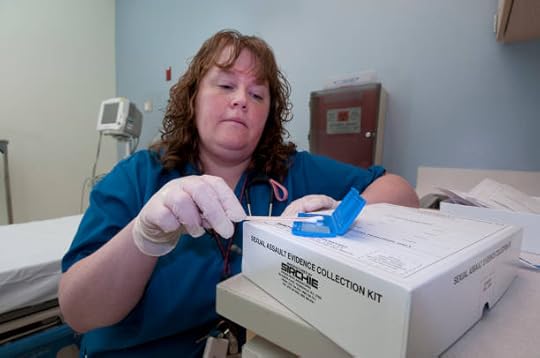 This post includes part of a re-post, because I am incensed and reacting to: A FEMALE CONGRESS WOMAN suggesting that rape is an opportunity for women!! Her name is: Rep. Jean Schmidt of Ohio….she is suggesting that women who get pregnant from a rape, should see this as an opportunity to raise that child.RAPE IN OUR CULTUREAs the mother of two daughters–when did I tell them or how did they find out–that there was something called rape, and that women in all societies are vulnerable, in the face of men?Did I sit down with them and have this direct conversation? (More on that later.) I do remember discussions about locking car doors, doing the same when they were babysitting, and later making sure that their university campus life included mace and the ability to seek medical services right on campus. I made sure they were informed in the best way that I could. Knowledge is power.And do you remember…as a female or as a male, when you first learned about rape?
This post includes part of a re-post, because I am incensed and reacting to: A FEMALE CONGRESS WOMAN suggesting that rape is an opportunity for women!! Her name is: Rep. Jean Schmidt of Ohio….she is suggesting that women who get pregnant from a rape, should see this as an opportunity to raise that child.RAPE IN OUR CULTUREAs the mother of two daughters–when did I tell them or how did they find out–that there was something called rape, and that women in all societies are vulnerable, in the face of men?Did I sit down with them and have this direct conversation? (More on that later.) I do remember discussions about locking car doors, doing the same when they were babysitting, and later making sure that their university campus life included mace and the ability to seek medical services right on campus. I made sure they were informed in the best way that I could. Knowledge is power.And do you remember…as a female or as a male, when you first learned about rape?I was in grade school when I was in the dining room reading the Chicago Tribune and landed on some piece about a Jewish man in Germany during WW II, who had to sit on the street with a sign around him that read, I RAPE GERMAN WOMEN.
“What’s rape?” I asked my mother. Five o’clock on a busy evening, she making dinner. She told me something vague, probably that included the word assault. So I looked rape up in the dictionary. Then I began to understand. But not really…you start to put things together, but slowly..two missing girls in Chicago, then another girl missing. Always girls. Girls aren’t safe. There is something about being a girl…
(And please note, that I am fully aware that boys and men can also be vulnerable.)
OUT IN THE WORLD
There has always been lots of talk about safety, and about fear. People talk about the old days. For some, the old days were safe. That’s crazy talk. Women have never been totally safe from rape. Many mornings I walked to my high school by myself, a good two mile walk. Many evenings I walked home alone. It was often dark and cold in Chicago, but I was fine. I was a latch-key kid. When I look back on this, basically, I was lucky.
In college, a group of boys from Loyola tried to harm Kathy T. when she was walking alone near Lake Michigan. She got away. Another guy with mental issues, tried to break into a dorm room. Before I was married, my name in the paper, I got a phone call from some guy who I admit used language I was not totally familiar with. But instinct tells you he’s talking about something evil. I hung up, called the police. I learned, realized more and more, that being a woman can lead to that heart-stopping moment when you are encountering something frightening, something not right and your body tells you–you are in danger, you need to get out of this situation!
Then you’re a mother, and you get a call one Tuesday morning when your two young daughters are in school. The voice says he “has your daughter.” You hang up. Call the school, get the principal and say: I’M RIGHT HERE AND YOU WLL GO TO EACH CLASSROOM AND FIND MY GIRLS, AND THEN YOU WILL COME BACK AND TELL ME THEY ARE THERE, THEY ARE FINE. Your heart is pounding, but eventually he comes back–your children are okay.
There’s the elevator door that opens mid-day in the hospital, you in your nursing school smock, and there’s one man in the elevator. You get on, you are riding down together and this man, who is wearing a stethoscope, says he has some cookies in his car. Would you like to go there with him? EVEN DOCTORS! When the elevator door opens, you walk really fast to get away from this creep.
Of course as you live, as you raise your children, there comes a time when you have to, you absolutely have to talk to them about rape. For me THE TALK was precipitated by an incident, a teen had been raped in a shopping center near our neighborhood. It was all over the news; my older daughter wondered WHY I wasn’t talking about it. I was wrong. Knowledge is always power.
BE CAREFUL. AND THANKS TO S.A.N.E. which stands for SEXUAL ASSAULT NURSE EXAMINER.
For there is absolutely no question that each and every woman on the planet can be vulnerable. Each one of us has to be smart, has to be careful. Will it change? We are in a flurry of political activity now that questions women still, makes fun of them and their fears, does not understand that one 20 minute experience can implant fear on the brain FOREVER. That’s what incensed me about the statement of Rep. Jean Smith.WAKE UP WOMEN! And charge the men in your lives to protect women. RAISE YOUR SONS to honor women. Be thankful for some changes in society, like S.A.N.E. (Sexual Assault Nurse Examiner) nurses who are specially trained in the medical, psychological, and forensic examination of a sexual assault victim. Because this is real–and there was a time when a medical person would walk into the ER and call out, “Who’s the rape?” That won’t happen anymore. Police, nurses, ER workers–all should now be trained to care for a victim using specific standards. To learn more go here. Thanks for reading.PHOTO: thanks to BU TODAY and Cydney Scott
Facebook Twitter LinkedInPinterestApril 24, 2022
Thirteen Ways of Looking at a Blackbird — Wallace Stevens
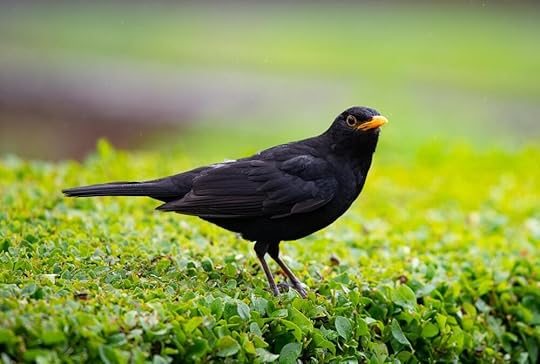 Among twenty snowy mountains,The only moving thingWas the eye of the blackbird.III was of three minds,Like a treeIn which there are three blackbirds.IIIThe blackbird whirled in the autumn winds.It was a small part of the pantomime.IVA man and a womanAre one.A man and a woman and a blackbirdAre one.VI do not know which to prefer,The beauty of inflectionsOr the beauty of innuendoes,The blackbird whistlingOr just after.VIIcicles filled the long windowWith barbaric glass.The shadow of the blackbirdCrossed it, to and fro.The moodTraced in the shadowAn indecipherable cause.VIIO thin men of Haddam,Why do you imagine golden birds?Do you not see how the blackbirdWalks around the feetOf the women about you?VIIII know noble accentsAnd lucid, inescapable rhythms;But I know, too,That the blackbird is involvedIn what I know.IXWhen the blackbird flew out of sight,It marked the edgeOf one of many circles.XAt the sight of blackbirdsFlying in a green light,Even the bawds of euphonyWould cry out sharply.XIHe rode over ConnecticutIn a glass coach.Once, a fear pierced him,In that he mistookThe shadow of his equipageFor blackbirds.XIIThe river is moving.The blackbird must be flying.XIIIIt was evening all afternoon.It was snowingAnd it was going to snow.The blackbird satIn the cedar-limbs. THOUGHTS ABOUT THIS POEMAs the title suggests, the poem is about different ways of seeing and perceiving the world—with the blackbird being the specific point of focus. In fact, Stevens himself called this poem a group of “sensations”—fleeting experiences that don’t necessarily have an obvious meaning. (Haddam is a small town in Connecticut, approximately 30 miles south of Stevens’ home in Hartford.) This poem was written by Stevens in 1917. He stated that it was a collection of sensations. “Each miniature creates a world of possibility for the reader, each scenario has a different ‘feel’. The landscape changes, there are subtle movements, there are degrees of involvement determined in part by poetic form.”I present it to you today, as a comment on speed, variety, the inundation of information, words, photos, even sounds. I wonder how future brains will change after the bombardment of information that starts from the moment we are born. Certainly our environments create us in some ways. We see that in adults whose childhoods damaged them irreparably, though sometime intense therapy can heal.Though I studied poetry in college, I had never read this poem. So I bring it to you today for three reasons: how it challenges the reader; the beauty it provides and finally a question that stems from it: in our world of sound, images, fast-moving news, film, music, even how our bodies can be transported within hours to places we have never seen–do you feel settled in one place? Is there something you do to ground yourself? And if you do, does it help?Thanks for reading, Beth (I tried to provide more reading space, but Word Press fought back!)Thanks to: https://owlcation.com/humanities/Analysis-of-Poem-Thirteen-Ways-of-Looking-at-a-Blackbird-by-Wallace-StevensFacebook Twitter LinkedInPinterest
Among twenty snowy mountains,The only moving thingWas the eye of the blackbird.III was of three minds,Like a treeIn which there are three blackbirds.IIIThe blackbird whirled in the autumn winds.It was a small part of the pantomime.IVA man and a womanAre one.A man and a woman and a blackbirdAre one.VI do not know which to prefer,The beauty of inflectionsOr the beauty of innuendoes,The blackbird whistlingOr just after.VIIcicles filled the long windowWith barbaric glass.The shadow of the blackbirdCrossed it, to and fro.The moodTraced in the shadowAn indecipherable cause.VIIO thin men of Haddam,Why do you imagine golden birds?Do you not see how the blackbirdWalks around the feetOf the women about you?VIIII know noble accentsAnd lucid, inescapable rhythms;But I know, too,That the blackbird is involvedIn what I know.IXWhen the blackbird flew out of sight,It marked the edgeOf one of many circles.XAt the sight of blackbirdsFlying in a green light,Even the bawds of euphonyWould cry out sharply.XIHe rode over ConnecticutIn a glass coach.Once, a fear pierced him,In that he mistookThe shadow of his equipageFor blackbirds.XIIThe river is moving.The blackbird must be flying.XIIIIt was evening all afternoon.It was snowingAnd it was going to snow.The blackbird satIn the cedar-limbs. THOUGHTS ABOUT THIS POEMAs the title suggests, the poem is about different ways of seeing and perceiving the world—with the blackbird being the specific point of focus. In fact, Stevens himself called this poem a group of “sensations”—fleeting experiences that don’t necessarily have an obvious meaning. (Haddam is a small town in Connecticut, approximately 30 miles south of Stevens’ home in Hartford.) This poem was written by Stevens in 1917. He stated that it was a collection of sensations. “Each miniature creates a world of possibility for the reader, each scenario has a different ‘feel’. The landscape changes, there are subtle movements, there are degrees of involvement determined in part by poetic form.”I present it to you today, as a comment on speed, variety, the inundation of information, words, photos, even sounds. I wonder how future brains will change after the bombardment of information that starts from the moment we are born. Certainly our environments create us in some ways. We see that in adults whose childhoods damaged them irreparably, though sometime intense therapy can heal.Though I studied poetry in college, I had never read this poem. So I bring it to you today for three reasons: how it challenges the reader; the beauty it provides and finally a question that stems from it: in our world of sound, images, fast-moving news, film, music, even how our bodies can be transported within hours to places we have never seen–do you feel settled in one place? Is there something you do to ground yourself? And if you do, does it help?Thanks for reading, Beth (I tried to provide more reading space, but Word Press fought back!)Thanks to: https://owlcation.com/humanities/Analysis-of-Poem-Thirteen-Ways-of-Looking-at-a-Blackbird-by-Wallace-StevensFacebook Twitter LinkedInPinterest
April 10, 2022
PLEASE READ: To Any Child You Know…
Why am I blessed with certain values? Why do I often do research first, before making a decision about almost anything? Why am I able to consider points of view before loving or condemning an outcome? Why, while relating to people I have never met, I can usually find a common topic to discuss? And why do I love the diversity that IS American culture?
Answer: Because I grew up in a home where reading was not only necessary, it was wonderful! My mother made sure I could read, I had access to books and print materials. Thus as I grew, I learned to love reading: books, newspapers, magazines, and now online essays, articles, blog posts and newsmagazines.
Any family member can read to a younger child, excite that child about the power of reading and thus help that child learn the reading habit, the love of reading. And it can start with a variety of media. But books for children–that’s the best place to start.
THE READING HABBIT (or just skip to the list below)
Many children’s stories are magical and enduring, conveying ideas, moral messages while stimulating thinking and imagination. Children’s books do this by creating characters a child loves, sees himself or herself in the narrative situation. Children’s books do this through the wonder of imagination and if there is a message, it’s subtle, your child or grandchild, nephew, niece, friend, turning to you and saying–“I’m glad she shared, in the end.” Or–“I know how he felt when the father said that.”
When you read to a child, they immediately pick up on ideas, the message. They always ask questions, often are emotionally touched. Reading children’s books can serve as preparation for more complex literature and more complex ideas later in life. It can also simply help a child see morality or new ideas in action. Childhood is preparation for LIFE. And childhood, when we look back on ours, can be fleeting. We need to help them get ready…
If you search for “children’s books” many familiar titles appear. The following are not brand-new, but older treasurers: Good Night Moon, A Wrinkle in Time, The Tale of Peter Rabbit, Charlie and the Chocolate Factory, Charlotte’s Web, Where the Wild Things Are…
NOW FOR SOMETHING NEWER…
Under an article, 100 Best Children’s Books, here are some newer listings that made me smile…
Dream Big, Little One by Vashti Harrison (Baby to 3 years) Presents 18 encouraging pioneers, including Bessie Coleman, a pilot.
And Tango Makes Three by Justin Richardson and Peter Parnell (2-5) The tender story of two boy penguins who become a couple and start a family. It’s an LGBTQ book, predicted to warm the heart and open the mind.
An old favorite: The Snowy Day by Ezra Jack Keats (2-5) This is a classic that I read to my children, being “groundbreaking in its depiction of multicultural urban life. The writer takes a simple experience, exploring a recent snow fall, and adds wisdom and wit—and quietly emphasizes how life should be.
The Story of My Open Adoption by Leah Campbell. This book explores the complex layers of open adoption…introduces little ones to the many varieties of families. Story line: an adopted child goes with his rabbit parents to meet his squirrel first family.
Fry Bread: A Native American Family Story by Kevin Noble Maillard (3-6) This lovely story presents a Native American family cooking fry bread. The story is poetic as it reveals everything food and tradition means to family.
We Are Water Protectors by Carole Lindstrom (3-6) This book won the Caldecott Medal, has lovely artwork and the poetic story presents an ecological message about water preservation. It also focusses on our land and its connection to Indigenous cultures.
Chalk by Bill Thomsom (3-7) This 2010 picture book provides children with images that tell a story without words. Three fiends find a bag of chalk. They draw pictures that come to life! But then the pictures start to cause problems. The children must draw the solutions!!
The Name Jar by Yangsook Choi (3-7) Published in 2001, teachers have used it, because it provides a powerful message of acceptance and personal strength. Unhei has moved from Korea and is now living in the U.S. The children in her school can’t pronounce her name. Will she choose an American name, or find the courage to honor her roots and identity?
Two Homes by Claire Masurel (3-7) This is a story about children having two homes because their parents are divorced or separated. They learn that different doesn’t mean worse and that they can find comfort and love in both places.
Don’t Touch My Hair! By Sharee Miller (4-7) This story teaches a wonderful lesson about personal boundaries, Aria is young, Black with curls and everywhere she goes, folks want to touch her hair. Through her imagination she learns to stand up for herself.
All of these books are included in a Reader’s Digest piece: 100 Best Children’s Books of All Time. I have listed ones that help children with inclusivity. There are many other titles that you will recognize, books you probably read to your children: The Velveteen Rabbit, Winnie the Pooh, Madeline, The Very Hungry Caterpillar…
Maybe you still have a bookcase with weathered and old favorites. Now all you need is to find a child to read them to…
Art Work: Rosilyn Young
Thanks to: https://www.rd.com/list/the-best-childrens-books-ever-written
Facebook Twitter LinkedInPinterestApril 3, 2022
THE THEME THAT RUNS THROUGH IT
As a writer, there is no doubt that my background, education, family relationships and employment history color the ideas that appear in my work. Some of the very words and expressions that land on the page come from deep emotions, buried past experiences. It is all part of the unconscious life that lives within us, propels some of our decisions as well as our creativity. It’s the theme of our days, the flow of joys and sorrows. I believe it also appears in our dreams, where we work things out, relive events. But if you are like me, dreams are hard to pin down. We might remember aspects of a dream, but it soon slips away–unless it’s a nightmare.
WHAT’S HAPPENING
This past week I sent part of my Memoir to a small publication. It will be interesting to see what they say. Below is an excerpt. It reflects how I lived after my father died of a massive coronary. Though I wrote the memoir as an adult–that’s the whole point. The unconscious remembers. There is loss, sadness. A theme runs through it. I was three years old, when he died; She, is my mother.
There will always be songs, the words of love She will sing to me, and the soft body of my tiny brother as I hold him. There will be the quiet of the back bedroom with the shades pulled, the hall light on, the window slightly open to the crickets, maybe an owl. And there will be me, lying in bed, sucking my thumb as my heart beats, beats—living moments buried in the wood and plaster of this house, mingling with the slope of the ceilings, the creak of the floors, the very air of the space. The house will be there, a second skin, comforting me, ferrying my child self into the future.
Writing a memoir is really a form of confession. You can’t hold back. You must report your life exactly as it was. After the thumb sucking, I would need braces. But I lost my father at the age of three, so the consensus was–if she needs to suck her thumb for comfort, just let her be.
WHEN YOU SIT DOWN TO WRITE, YOU WRITE YOUR LIFE
I am also rewriting a novel. Are some of the same themes echoing in this excerpt? Yes. Maybe you also see loneliness, loss. We write what we know. Our characters come alive on the page when they are imbued with how we feel, react. Every character has a little bit of you, the writer.
Ella roamed, searching closets, drawers, never certain of what she was looking for— living room curtains closed, only narrow knives of sunlight slicing through. Always listening for her mother’s footsteps, startled by the thudding of the grandfather clock, the pendulum descending, asking: where is your father, why did he leave you? Ella never understanding why the woman she depended on hid away. The result, creating a secret twin to give her courage, be with her while wandering the darkened house, though Ella never knew what she was looking for.
Then later, more courage, Ella and her secret twin, going out, roaming the neighborhood, feeling the tall spring grass against their legs, walking farther and farther, counting the city blocks all the way to the lake—something she’d been warned never to do, ignoring her sleeping mother, being content with her ghostly partner—Cecile never to notice that you were gone, you’d disobeyed, you being forced to grow yourself, make your way to the commercial strip, all its shops….w ind whispering in the trees, “you can do this, you will find your way.”
THANKS FOR READING
P.S. The mother in the novel, Cecile, is the opposite of my mother. But sometimes it takes that tension, that complete departure to create real events and certainly more drama.
Facebook Twitter LinkedInPinterest
March 27, 2022
A REVIEW of MERCY STREET by Jennifer Haigh
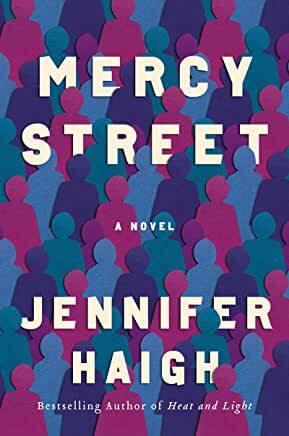 My first experience of reading Jennifer Haigh’s literary and thoughtful work was her novel FAITH, published in 2011. It’s the story of an estranged sister returning to Boston to help defend her priest-brother, who has been recently accused of fondling children in the Boston archdiocese sex scandal. At that time, a reviewer wrote: “…this isn’t a novel about orthodoxy or catechism. It’s not even really about the abuse scandal…it’s a novel about empathy and trust. And it’s absolutely riveting.”
My first experience of reading Jennifer Haigh’s literary and thoughtful work was her novel FAITH, published in 2011. It’s the story of an estranged sister returning to Boston to help defend her priest-brother, who has been recently accused of fondling children in the Boston archdiocese sex scandal. At that time, a reviewer wrote: “…this isn’t a novel about orthodoxy or catechism. It’s not even really about the abuse scandal…it’s a novel about empathy and trust. And it’s absolutely riveting.”
Haigh is a writer who speaks through her characters, challenging our views, while educating and enlightening us. In FAITH, the priest’s sister Sheila states: “It was a thing I’d always known but until recently had forgotten: faith is a decision. In its most basic form, it is a choice.” In an interview concerning the research she did while writing FAITH, Haigh expanded on this: “…when reading about priests who’d been accused of sexual abuse, I was struck by the difficulty of getting to the bottom of such cases…It mirrors the way all novels are written. To me, writing is an exercise in empathy.”
EMPATHY ONCE AGAIN
Haigh uses her writing prowess to create characters, who throughout this new novel, reveal their complex reactions to the medical procedure the general public calls abortion. In vastly different ways, every character in MERCY STREET reacts to the presence of abortion in our culture. There is the main character, Claudia, part of the health team at Mercy Street, who meets with each potential client to counsel, guide her toward a decision that Claudia hopes will work for that individual and her future. Knowledge of medicine is definitely part of this process, Haigh including medical terms, dates and symptoms—she’s done the necessary homework to add credence to her story. There are also male characters, whose hate of abortion springs from a basic hatred of women, a seed that grows, becoming a full-on death wish for anyone involved in the abortion process.
In FAITH, Father Breen states: How did anyone ever know what another person was feeling? In MERCY STREET, that same question is expanded, asked of all the characters, both women and men. Haigh makes it clear—there is never an easy answer; and there is always struggle. “By the time a woman Googled ‘abortion Boston’…Her decision was already made.”
THE AUTHOR’S WRITING PROCESS
Jennifer Haigh lives in Boston where there is an actual Mercy Street that spans a single block southeast of the Boston Common. Ironically, Mercy Street is described online as being in a part of town once known as the Combat Zone. Ah, Boston, the combat zone, the American revolution, Boston’s brick houses, cobbled streets, people early on struggling to lead good lives of example, and by necessity, creating emblems of equality and care. Another feature that can make Boston a hotbed for abortion is its many Irish descendants, and thus the power of the Catholic Church. In this novel, Haigh has chosen wisely, abortion and the Catholic church struggling in its own combat zone, Haigh describing what is often an explosive issue, creating real characters, their flaws, their backgrounds, and always their choices. Her chosen title illuminates how present American society might forever live with this divided issue, and that those two sides will forever demand mercy for their position.
THE NOVEL’S THEMES
When anyone writes about abortion, abandoned children, dead children he or she might be criticized for creating a ripped from the headlines position—but Haigh, a competent and empathic writer, has the right to do so. Because again, empathy.
The bag held the drowned body of a child—a little girl, perhaps two years old..face bloated beyond recognition…who was she…To the entire city of Boston she became Baby Doe.
As a fetus Baby Doe had been protected by Massachusetts law…as a person she was utterly dependent on a woman who couldn’t raise her and didn’t want to. Once she became an actual person, Baby Doe was on her own.
Reading MERCY STREET we are often with Claudia, her struggle to help a woman who is contemplating this decision to have an abortion. We view the women’s personal struggle through Claudia, the heart and soul of Mercy Street.
Claudia thought of the protestors gathered on Mercy Street: the churchgoing faithful, the celibate priests and monks. Would they have any interest in Shannon F.—a homeless addict who haunted the brick sidewalks of Downtown Crossing, harassing tourists for spare change—if she weren’t pregnant? Preventing her abortion was all they cared about. The bleak struggle of her life—the stark daily realities that made motherhood impossible—didn’t trouble them at all.
At other times, we are with a male character, Victor, who sees his duty that of destroying anyone involved in the process of abortion and of course those central to it—females.
The bag was packed with unnecessary items, useless in an urban setting. Victor ditched the filtration tabs and bear spray, the waterproof poncho. That left enough room for the street map of Boston, his EDC and side holster, a box of ammo, and a handful of zip ties. Whether he would need any of these items was impossible to say. At first light he set out driving…As he watched the log house disappear in his rearview, he wondered if he would ever return….How he would find the abortionist, or recognize the guy when he saw him, was not clear…What he needed more than anything, was more boots on the ground.
FINAL THOUGHT
Haigh’s novel, at first glance, is about a complicated subject not only taking place in Boston, but all across America. The questions the novel poses could be applied to women of all backgrounds and situations, women who brave protestors crowding the space in front of the Mercy Street Clinic, women who push through its doors, seeking help. Jennifer Haigh’s novel illuminates the balance and conflict in a woman’s decision to have an abortion. In the future, some of us or someone we know and love might find we are journeying to a Mercy Street, not for what that fictional clinic provides, but for some aspect of healthcare, all of us searching for more time, for another day, for our own individual freedom.
Facebook Twitter LinkedInPinterestMarch 20, 2022
Looking at Grief
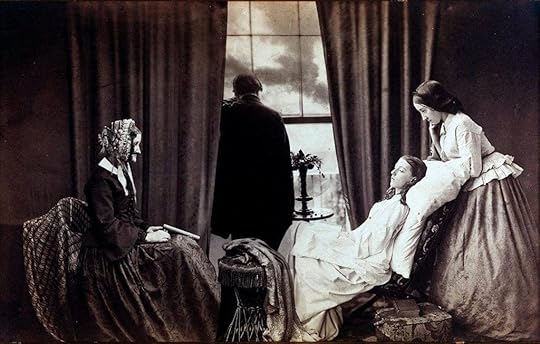
Fading Away, Henry Peach Robinson
This post was inspired by an article in the New York Times: We Must Learn to Look at Grief by Sunita Puri, a palliative care physician.
The specific case: Dr. Puri tells the wife of a patient that her husband is dying from Covid19. He had guided her as she made medical decisions for her husband. Dr. Puri explained that her husband’s lungs were destroyed. All the woman responded was that she knew he would not want to suffer.
Puri writes: In the ICU the next day, she wasn’t allowed to be at his side, but was given permission to see him from the other side of his room’s sliding doors.
She stared at her husband, her slight frame swallowed by a billowing yellow PPE gown. She removed her latex gloves, pressed her palms against the glass, watched an RN push pain medicine into his vein. The respiratory therapist removed her husband’s breathing tube in one graceful arc. My patient’s wife pressed harder against the glass, inched closer. Her husband took shallow breaths for a few minutes, and then was still. The wife dropped her head, folding like paper curling toward the fire that consumes it. The imprint of her palms remained on the glass door.
THE WORDS OF A COMPASSIONATE PHYSICIAN
In the interview, Dr. Puri states that it is natural and possibly instinctive to want to look away from death, to deny its existence or banish it to a shadow world. But, it can also be an opportunity to examine, rather than bury grief–especially if it belongs to us. Dr. Puri emphasizes that bearing witness to death and pain is the only way we can move forward. The patient’s wife showed Dr. Puri photos of the life she and her husband had together. She wanted to know the numbers, the percentage of patients who HAD SURVIVED.
Dr. Puri writes that early in his career, he tried to distract himself from the pain of his career by watching S.N.L. marathons or by eating chocolate cake. He tells us: Eventually, I realized it wasn’t my job to protect people from their grief or to solve it….The prelude to compassion is the willingness to see.
He stresses: One week before her husband died, my patient’s wife called to ask me how she could possibly move on with her life in a world where her husband didn’t exist. I don’t believe in “moving on” and “finding closure”, she told him… The challenge for my patients and their families is the challenge for every human: Can we move forward with grief? Can we find a way to integrate loss into life, carry it with us?
At the end of his essay, Dr. Puri reminds us that grief has affected everyone around us. Sometimes we feel discomfort when seeing others in pain, especially when we cannot intervene…He writes: Our country can still be united by seeing this suffering. WE ARE ALL MY PATIENT AND WE ARE ALL HIS WIFE. ..It is one lens through which we can see our shared humanity.
SHE HEARD THE NEWSPAPER FALL
A few weeks ago, when I finished reading this moving piece, I wrote at the bottom of the page: Concerning my father’s death, my mother had always told us that she knew he’d died in the next room, because, “She heard the newspaper fall.”
My father wasn’t in an ICU. He was reading the Chicago Tribune, sitting in his favorite chair in our living room. My mother was making formula for my 3 month old brother. My older brother and I were a few miles away, at my grandmother’s. My father had been having chest pain for months. SHE HEARD THE NEWSPAPER FALL. Massive coronary.
Dr. Puri knows that if we are able to look at our grief, and thus the grief of others, we will improve the human condition. All of us will eventually die. In the meantime, we should never deny the existence of an illness that is killing so many. We must support the medical community which also includes the wives and husbands, children and relatives of the suffering. One day for each of us, WE WILL HEAR THE NEWSPAPER FALL.
PS. This post was written before Russia attacked Ukraine. Now, once again our lives have changed. It is impossible for any one of us to ignore the deaths of innocent people. There was Covid and now there is war. We have been here before, our parents have been here before. Final thought: love your family; listen to your friends; follow Covid protocols if the virus and its mutations are still active where you live. And pray for peace, pray for Ukraine, give what you can, in anyway you can. Understand those who are grieving. Everyone of us will have grief in our lives, it’s our human condition. Thanks for reading.
Thanks to “We Must Learn to Look At Grief ” Opinion, Sunita Puri MD, palliative care physician, author of THAT GOOD NIGHT: LIFE and MEDICINE IN THE ELEVENTH HOUR
photo art: Henry Peach Robinson
Facebook Twitter LinkedInPinterestMarch 13, 2022
Teachers, School Board Members: We Were the Good Guys
In 2019, while we were while living in Thousand Oaks, California, things blew up in our local school district. The reason we knew this, (we did not have school-age children) was reading the LETTERS TO THE EDITOR in our local newspaper, THE ACORN. I got riled up for three reasons: I’m a parent of 3 adult children who read books all through their school years: Kindergarten to college, even graduate school, and because I taught English literature in a high school with a very diverse population. Oh and yes, I’m a taxpayer.
So first, let’s use our funding to educate American children so they can excel in the real world. Emphasis on real. We cannot live in these united states, if we aren’t willing to know one another’s history, to accept it, find goodness in the complex and complicated society that is OURS. Variety can be the spice of life. We need to know our total HISTORY, not some white-washed version, no pun intended. And note: the letters to the editor made it very clear that some parents were objecting to a few of the classics, but were really hot to ban Sherman Alexie’s The Absolutely True Diary of a Part-Time Indian, which in 2007 won the National Book Award for Young People’s Literature.
WHAT WAS HAPPENING?
Some folks were calling it Parent’s Rights. Because like a bad storm that had suddenly blown in, parents were now overly concerned about what their children were reading. But this time, they were down to specific sentences in the text. This was new. This was also Facebook and Twitter, spreading the word that lynching was being mentioned in a novel, or there was sexual content in Tony Morrison’s BELOVED and thus they were ready to ban Morrison’s book.
Julie West Johnson, in a piece in Chicago Life, writes that eight years ago in Virginia, a mother, Laura Murphy, had objected to the sexual content of Morrison’s BELOVED, despite the fact that her son was a SENIOR in HIGH SCHOOL at the time. Her complaint led to what is called the Beloved Bill, “which gives parents the right to opt their children out of reading books for school with ‘sexually explicit’ content. It became a political football in Virginia and you know who won the last governor election there.
In Thousand Oaks in 2019, the school board election was approaching, 3 open seats, six people running. The split: 3 defending books like Sherman Alexie’s; three against. I joined a women’s group to advocate, knock on doors for the “treat teens like they have brains” group. Things were getting hot, THE ACORN printing pro and con letters, many of the letters against these open-minded, or shall we say liberal books, the writers frequently mentioning THE FEDERALIST SOCIETY, like it was the bible of truth, their calling card; like it should be the life-blood of America. Even in California. But regardless the three candidates that I backed, they all won.
LET’S GET REAL
If you are raising or have raised teenagers in the last 10-20 years, you know how violent films and videos, even computer games can be. But it’s almost always SEX that rises up, pushes away violence and becomes the calling card for conservative thinking. And again, in our era with Covid, the bad guy has been science.
In her piece, Julie West Johnson reminds us of the 1925 Scopes Monkey Trial, when teacher John Scopes was found guilty of teaching evolution in Tennessee. A play, Inherit the Wind, was written about the trial and ironically, high schools absolutely loved performing that play–or they used to!!
CRT
Julie West Johnson writes in her piece that: Those parental and political efforts to influence what is taught have typically fallen into one of three spheres: controversial literature, science education, and what has become known as critical race theory.
Deborah Caldwell-Stone of the American Library Association’s Office of Intellectual Freedom agrees: “The moral panic that we’re seeing has created an extraordinary environment. Many of the books that are being challenged these days have been on library shelves for years without comment.”
Robert Reich, Stanford political scientist writes: “Minimal automomy requires, especially for its civic importance, that a child be able to examine his or her own political values and beliefs, and those of others, with a critical eye…The structure of schooling cannot simply replicate in every particularity the values and beliefs of a child’s home.” In simpler words, we need to let your children think about stuff.
FINAL THOUGHTS
As parents, we must allow our children to read and view literature, the social networks, news and other mediums of information in order for them to form their own moral and civic ideals. Parents should have some license, providing guidance and rules for what a child is exposed to, especially at a certain age (not a senior male in high school!) But they should also be willing to listen to different points of view, even arguments concerning that point of view. (In my youth, we had wonderful arguments at the dinner table.) We all have a right to ideas and principles. But attempting to use hate and prejudice to suppress information never works in the end. This is not Russia, we are the United States of America.
a big thank you to Chicagolife.net and Julie West Johnson
Facebook Twitter LinkedInPinterest
